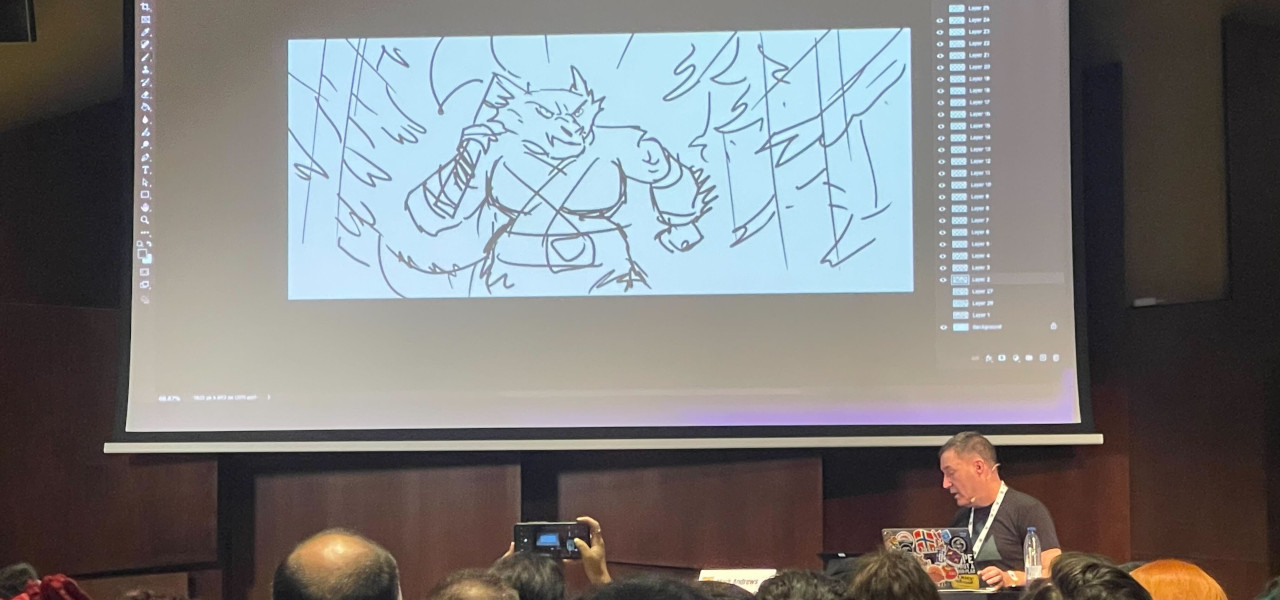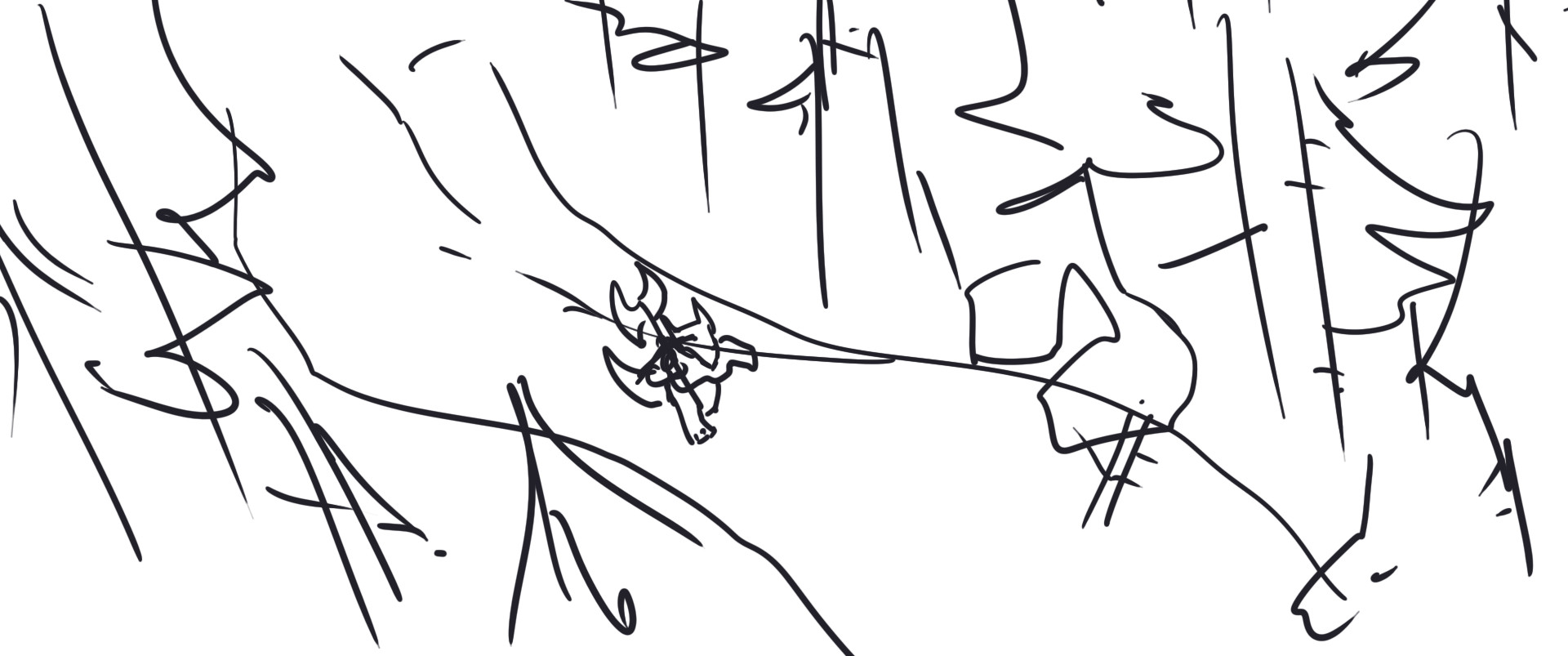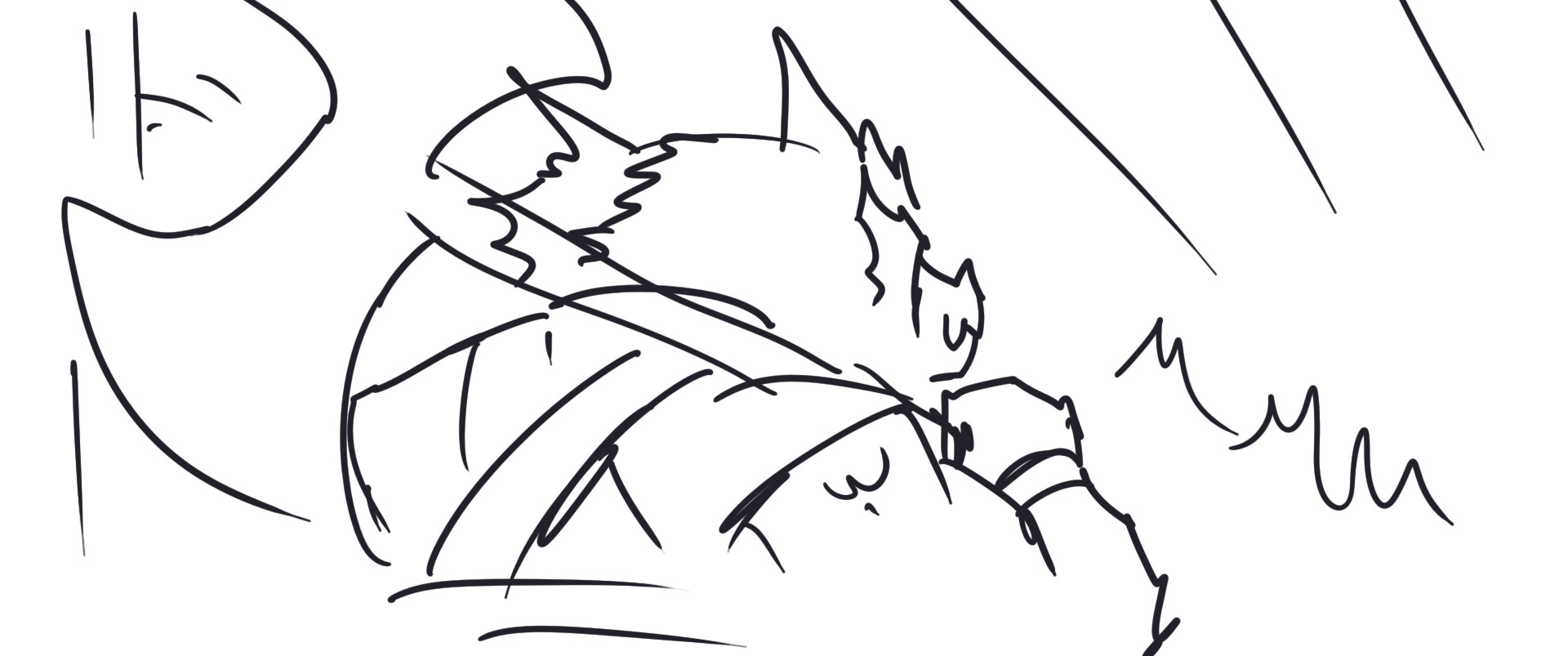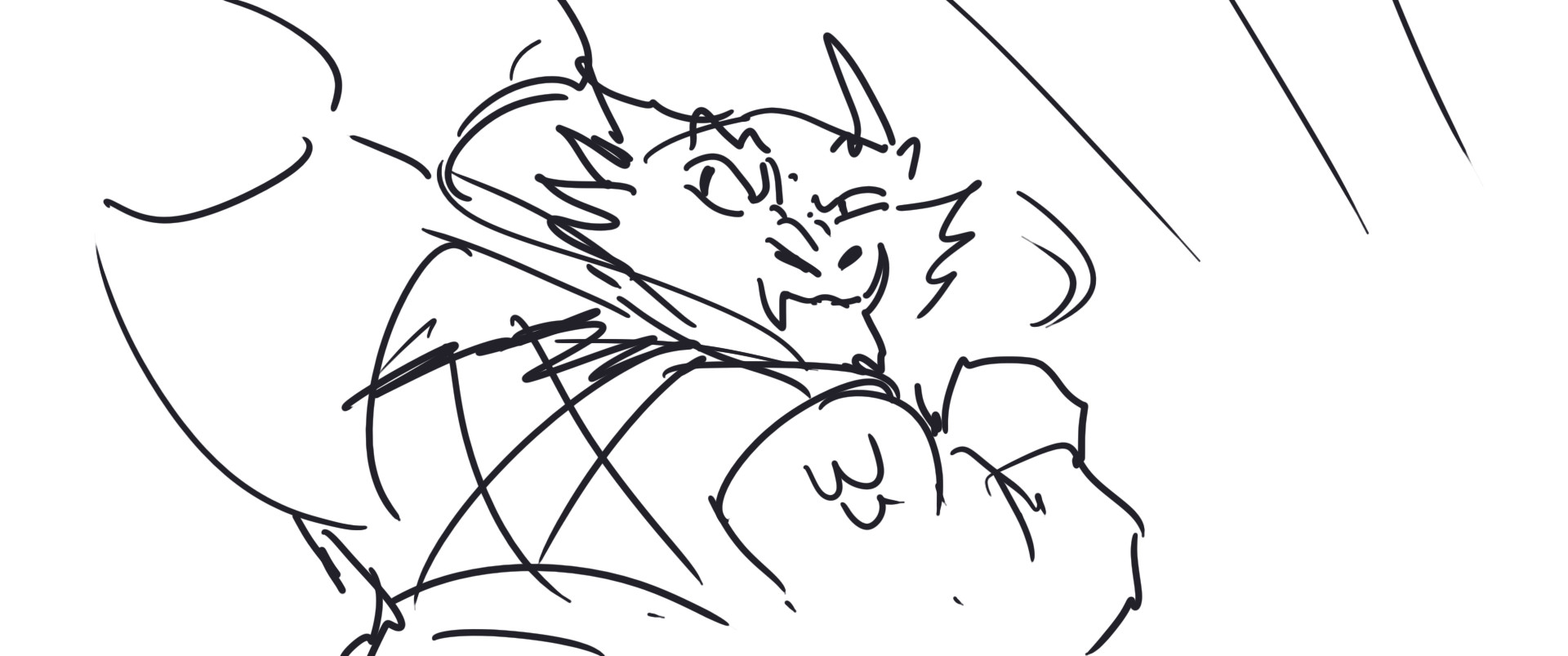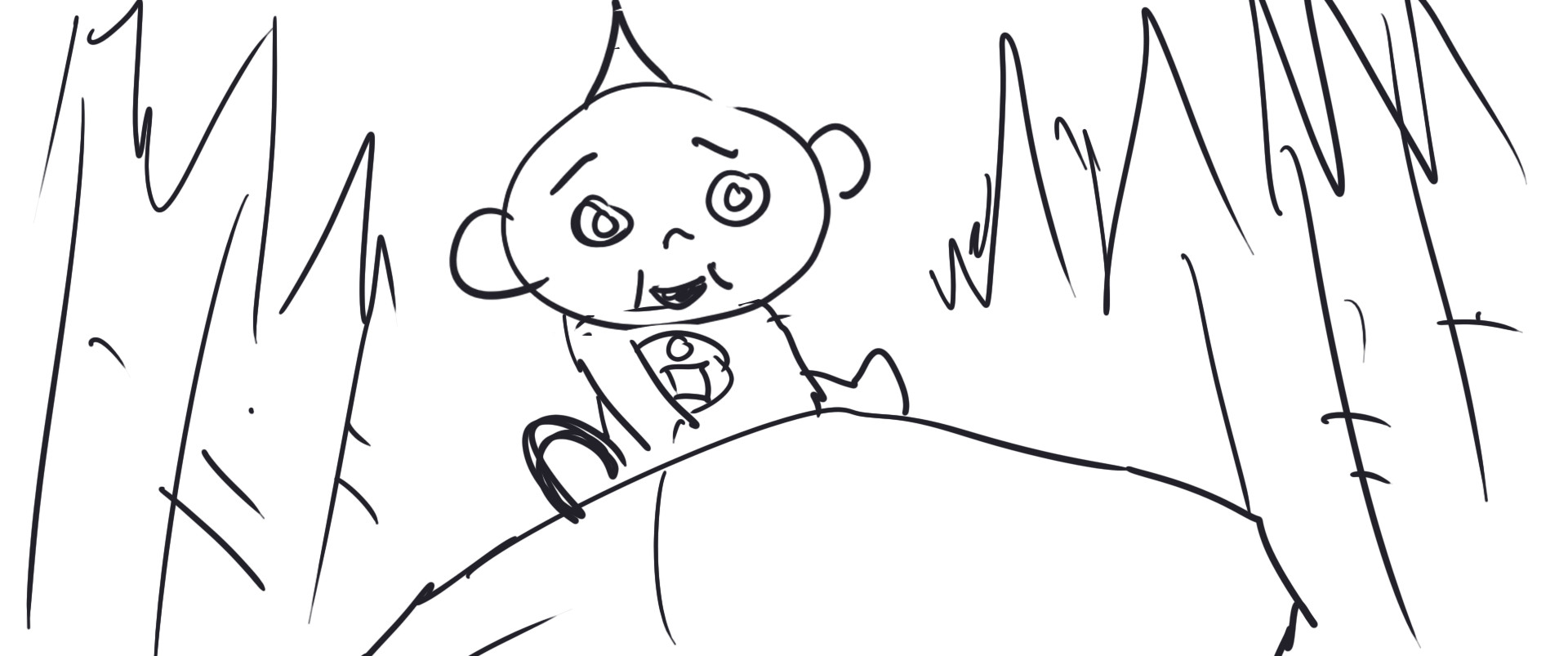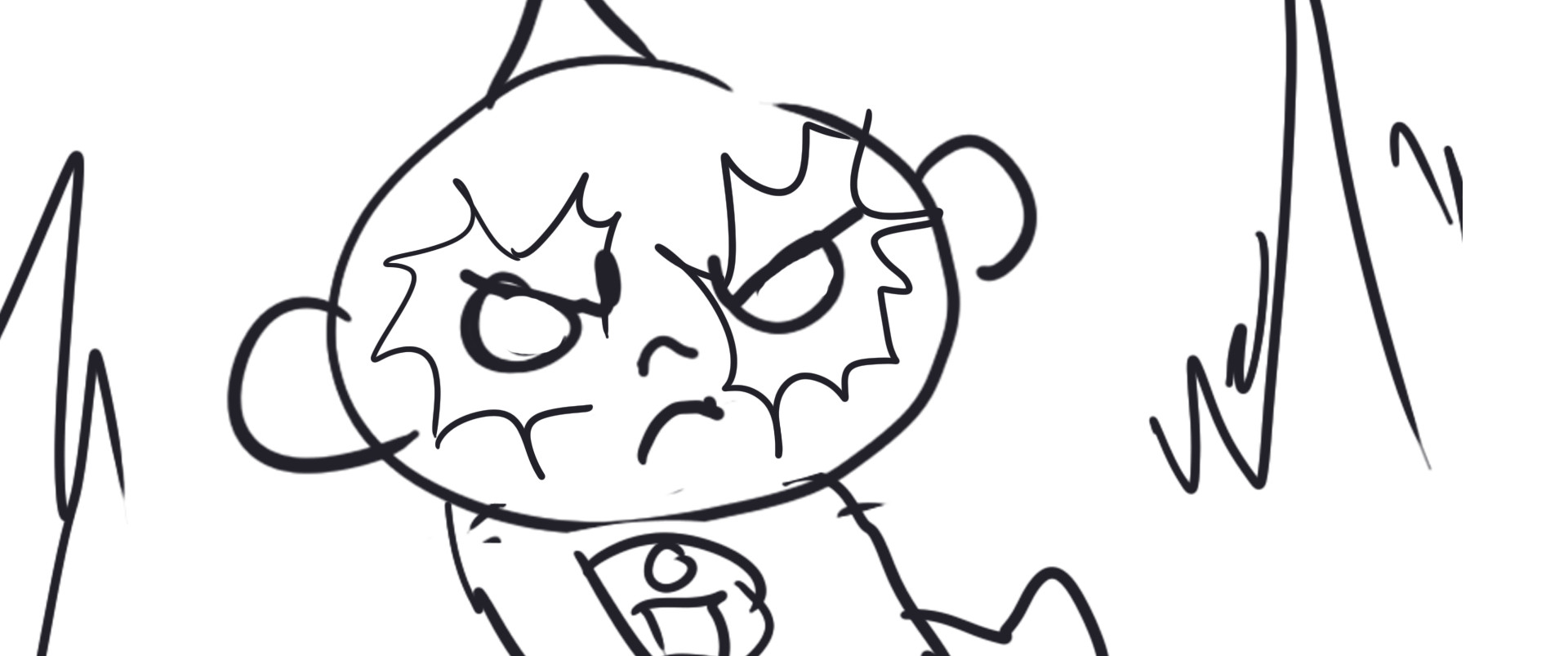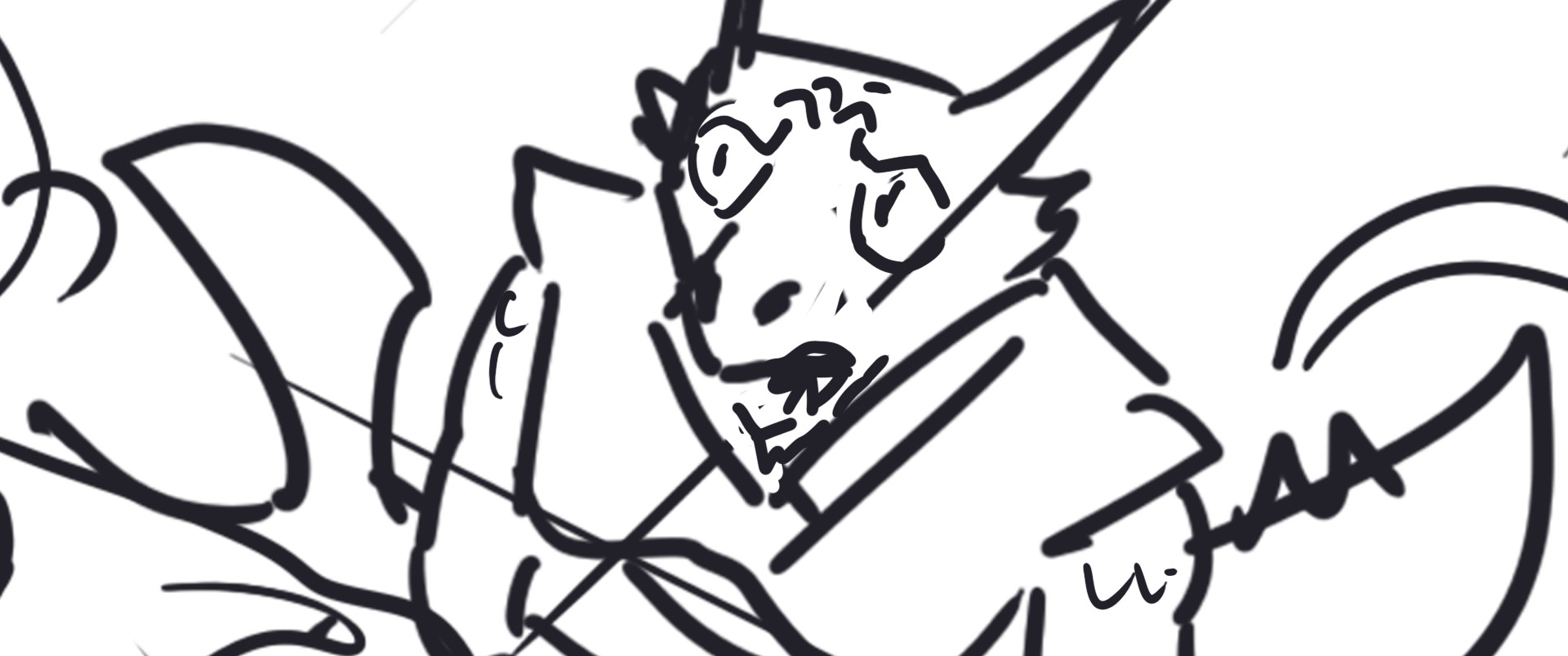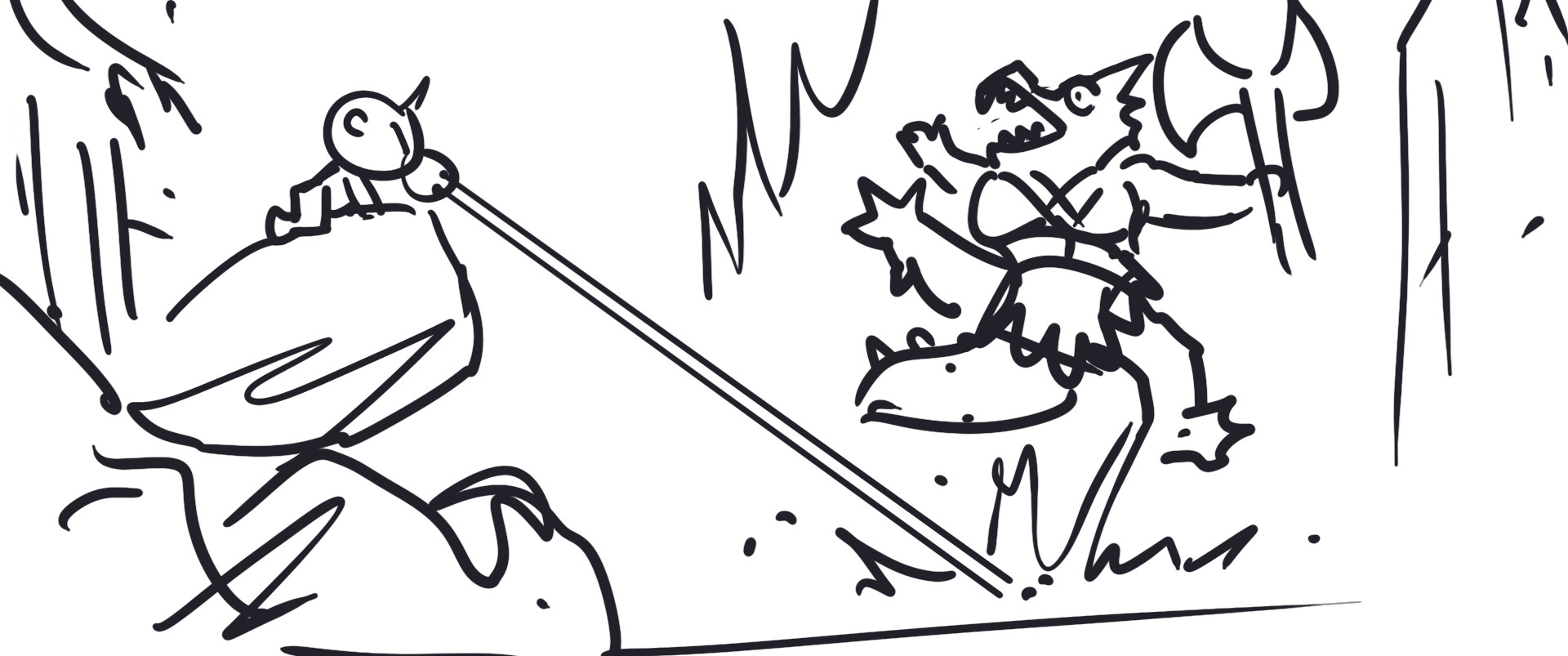Master story artist and director Mark Andrews was in Málaga this past weekend for the first-ever San Diego Comic-Con held outside of the U.S. There, he hosted two sold-out storyboarding masterclasses that were part improv comedy, part learning experience, and part career retrospective.
The Oscar-winning director of Brave — whose credits also include The Iron Giant, The Incredibles, Ratatouille, tons of iconic TV shows, and several live-action blockbusters — didn’t just talk about storyboarding. He did it, right there in front of the audience, stylus flying across his tablet while answering rapid-fire questions from the crowd.
“Basically, for the next 40 minutes, I’m just going to storyboard for you,” Andrews started. “And you guys feel free to ask me any questions about what I’m doing. Sound good?”
It was a return to a format Andrews first pioneered at Pixar when he taught the studio’s internal storyboarding courses. “One time I was really behind on my work,” he recalled. “So instead of teaching that day, I just sat down and started storyboarding. I said, ‘Ask me any question you want, guys, as I’m storyboarding.’ They were blown away seeing the process live and in action.”
Story From Nothing
The audience helped Andrews improvise a scenario as he called out requests like a comedian would. One person suggested a “half-dragon, half-dwarf woman,” and another shouted out “Baby Jack-Jack” from The Incredibles. Andrews grinned: “All right — half-dragon, half-dwarf woman dealing with Baby Jack-Jack. I have no idea how that’s going to work… but let’s find out.”
He began sketching an opening scene on the screen — a wide shot of a volcano leading down to a forest trail where the dragon-woman trudges along with an axe on her shoulder.
“Typically, what we start with is an exposition shot,” he explained. “Who, what, where, when — that’s the baggage before the story begins. The why and how is the story. So right now I’m thinking, where do we usually find half-dragons? Fantasy. Maybe a tavern, but that’s a lot of pencil mileage. Let’s do a volcano.”
The room laughed as Andrews narrated every stroke, thinking out loud: “I’m moving the camera down through the trees… putting a ground plane in so I know where my character sits… visual storytelling is everything in the shot. Not just character, but background, light, space.”
He worked fast, talking about composition, perspective, and emotional beats. “I’m not animating this thing, for Christ’s sake,” he said at one point, to big laughs. “I’m telling the story.”
Visual Storytelling
After getting over initial nerves, the audience warmed up and began peppering Andrews with questions. One asked how his boards translate to live-action filmmaking.
“Visual storytelling is visual storytelling,” Andrews replied. “When I worked with Sam Raimi on Spider-Man, his motto was: ‘You draw it, I shoot it.’ He didn’t want to think about setting up the shots. All the cinematography happened up front. In live action, backgrounds are often left out of storyboards. I think that’s a mistake. I always drew them in so the layouts and camera team knew exactly what I was thinking.”
Another asked about modern storyboarding trends, specifically, the rise of highly detailed, almost animated boards.
“That’s a waste of time,” Andrews said bluntly, to murmurs of agreement. “Editorial tools are so fast now that people put in blinks and acting and anticipation because they can’t project ahead what it’s going to look like. But that’s the last 5%. The more time you spend animating your boards, the less time you have to think about story. That’s why 90% of storyboards I see today suck; they’re not telling a story, just using the same five shots over and over.”
Advice for Aspiring Artists
One of the most practical moments came when a young attendee asked how to apply for Pixar’s storied internships.
“Apply,” Andrews said with a grin, before getting serious. “For visual development, they want to see range. Characters, environments, castles in many different styles. Thousands of drawings. Thousands. You have to show you can deliver variations and switch styles. And you have to love drawing. If you’re not happy drawing all day, this isn’t for you.”
Another asked whether he always follows the script. Andrews didn’t hesitate:
“I tend not to. No offense to screenwriters, but a lot of scripts aren’t visual. Sometimes what’s written doesn’t work when you put it in a physical location. My job is to tell the best story I can. Brad Bird once gave me this for The Iron Giant’s finale: ‘The biggest, most expensive, epic action scene ever seen in animation.’ That was the whole script description. So I pulled out my military encyclopedia and just went nuts; 2,400 panels on my first pass. Brad looked at it and said, ‘Cut it in half.’ That’s the process. Trial, error, and cutting down until only the best remains.”
‘Embrace the Chaos’
Andrews’ central theme was that storyboarding, and storytelling itself, is messy and intuitive.
“Story is alchemy. It’s not mechanical. If it were, Spielberg would win every Oscar. But he doesn’t. You can plan and still fail. You can improvise and succeed. You have to embrace the chaos.”
He urged artists not to fear mistakes. “My job is to close doors, not open them,” he said. “At the start, there are infinite doors. You have to keep shutting them until what’s left feels true.”
The session wrapped with laughter and applause as Andrews promised to continue the Jack-Jack vs. dragon-woman saga the next day.

